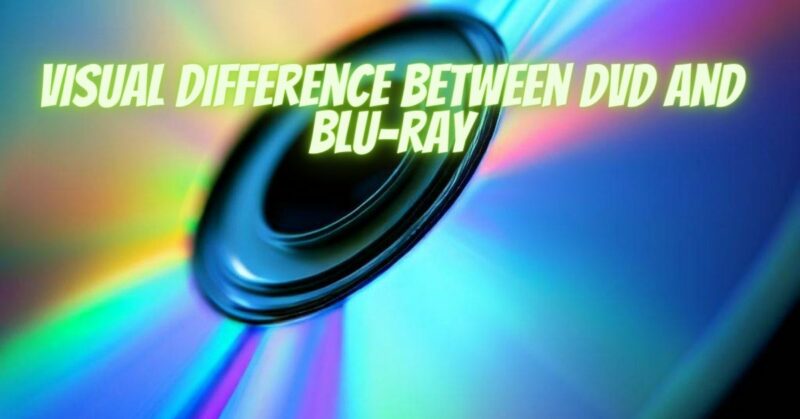When it comes to home entertainment, the visual quality of your movies can greatly impact your viewing experience. DVD and Blu-ray are two popular formats, each offering different levels of video quality. In this article, we will explore the visual differences between DVD and Blu-ray to help you understand how they compare and make an informed decision about which format is right for you.
- Resolution: The most significant visual difference between DVD and Blu-ray is the resolution. DVD typically has a resolution of 720×480 pixels for NTSC (North American) format or 720×576 pixels for PAL (European) format. On the other hand, Blu-ray offers a Full HD resolution of 1920×1080 pixels. This higher resolution means that Blu-ray can display more detailed and sharper images compared to DVD, resulting in a more immersive and visually pleasing experience, especially on larger screens or high-definition televisions.
- Detail and Clarity: Due to its higher resolution, Blu-ray provides significantly better detail and clarity compared to DVD. The increased pixel density of Blu-ray allows for finer details to be displayed, such as the texture of objects, facial expressions, and intricate backgrounds. This enhanced clarity contributes to a more lifelike and engaging viewing experience, where you can notice subtleties that may be missed on DVD.
- Color Reproduction: Blu-ray also excels in color reproduction. It can display a wider color gamut, meaning it can accurately reproduce a broader range of colors compared to DVD. This results in more vibrant and realistic color representation, enhancing the visual appeal of the content. Blu-ray’s ability to reproduce rich and nuanced colors adds depth and realism to the on-screen imagery, making it visually captivating.
- Contrast and Black Levels: Blu-ray generally provides better contrast and black levels than DVD. The format’s improved technology allows for deeper blacks and brighter whites, resulting in enhanced contrast and a more dynamic visual experience. This means that details in dark or shadowy scenes are more visible, and the overall image appears more balanced and visually appealing.
- Compression and Artifacts: Another important aspect to consider is the level of compression and the presence of artifacts. DVD uses more aggressive compression to fit the content onto the disc, which can lead to visible artifacts such as blockiness, pixelation, and loss of detail. Blu-ray, on the other hand, has a higher data capacity, allowing for less compression and a cleaner, artifact-free image.
Conclusion:
When it comes to visual quality, Blu-ray clearly outperforms DVD. With its higher resolution, improved detail, color reproduction, contrast, and lack of compression artifacts, Blu-ray delivers a superior visual experience. If you have a high-definition television or desire the best possible picture quality, investing in Blu-ray versions of your favorite movies is a recommended choice. However, if budget constraints or compatibility with older equipment are factors to consider, DVDs can still provide an enjoyable viewing experience, especially on smaller screens or older televisions.


